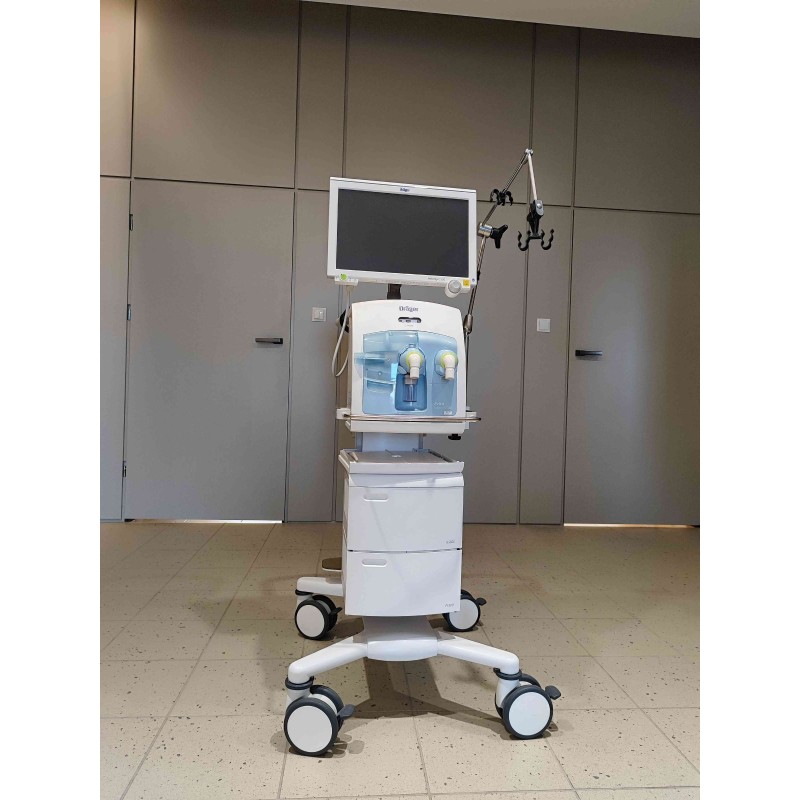Drager SAVINA 300 Ventilator
The Dräger Savina® 300 is a...
- Temporarily unavailable










The Dräger Evita Infinity V500 is an advanced ventilator suitable for hospital use and patient transport, thanks to its flexibility and various power options
Specifications of the Dräger Evita Infinity V500 Ventilator
Dimensions:
Height: 142 cm
Width: 57.7 cm
Depth: 68.7 cm
Weight: 59 kg
Display:
Type: TFT color touchscreen
Size: 17 inches (43.2 cm) diagonal
Ports: 3 external RS232 connections, 6 USB ports, 3 DVI outputs, 1 LAN port, 2 RJ45 connectors
Patient Types:
Adults, children, and neonates
Ventilation Modes:
Volume-controlled ventilation: VC-CMV, VC-SIMV, VC-AC, VC-MMV
Pressure-controlled ventilation: PC-CMV, PC-BIPAP1, PC-SIMV, PC-AC, PC-APRV, PC-PSV
Support for spontaneous breathing: SPN-CPAP/PS, SPN-CPAP/VS, SPN-CPAP, SPN-PPS
Enhancements:
AutoFlow / Volume Guarantee
Variable Pressure Support
Intelligent Pulmonary View
Automatic Tube Compensation
Mask ventilation
SmartCare/PS 2.0 – automated clinical protocol
Therapy Types:
Invasive ventilation (intubation)
Non-invasive ventilation
Oxygen therapy
Gas Supply:
O₂ pressure: 2.7 to 6.0 bar
Air pressure: 2.7 to 6.0 bar
Pressure Levels:
Inspiratory pressure (Pinsp): 1 to 95 mbar
Inspiratory pressure limit (Pmax): 2 to 100 mbar
PEEP: 0 to 50 mbar
Ventilation Rate:
Adults: 0.5 to 98/min; Children and neonates: 0.5 to 150/min
Inspiration time (Ti): Adults 0.11 to 10 s; Children and neonates 0.1 to 10 s
Tidal volume: Adults 0.1 to 3.0 L; Children 0.02 to 0.3 L; Neonates 0.002 to 0.1 L
Additional Features:
Monitoring of various respiratory parameters and automatic tube compensation enhance effective therapy for patients with diverse needs.
The Dräger Savina® 300 is a...